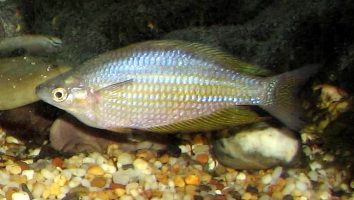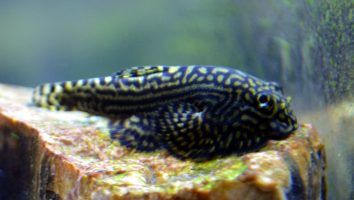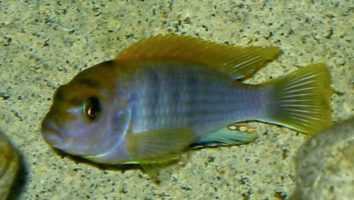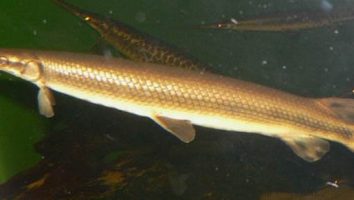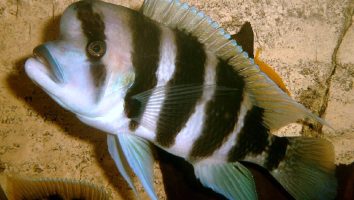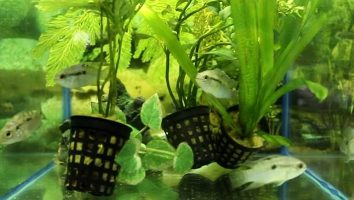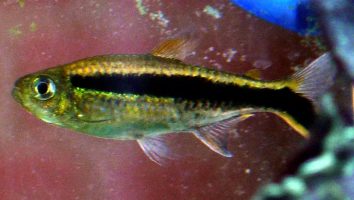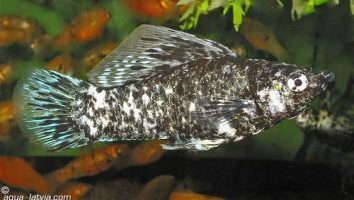The stinging catfish is a freshwater fish that is native to Southeast Asia.
This fish gets its name from the venomous barbs that line its body. The stinging catfish is also known as the Asian stone catfish, the stone catfish, and the stonefish.
This fish is not recommended for beginners as they can be difficult to care for. If you are considering getting a stinging catfish, please do your research first.
In this guide, we will go over everything you need to know about stinging catfish care. We will cover topics such as diet, tank mates, and more.
Table of contents
Species overview
The stinging catfish (scientific name: Heteropneustes fossilis) is a freshwater fish that’s native to South Asia. It’s most commonly found in India, Bangladesh, and Nepal.
This fish prefers slow-moving waters with a lot of vegetation. This could be anything from ponds and lakes to marshes and swamps.
The stinging catfish gets its name from the venomous barbs that line its body. These barbs are used as a defense mechanism and can cause a lot of pain if they puncture the skin.
The stinging catfish is a popular food fish in its native range. It’s also sometimes kept as a pet, although this is less common.
Appearance
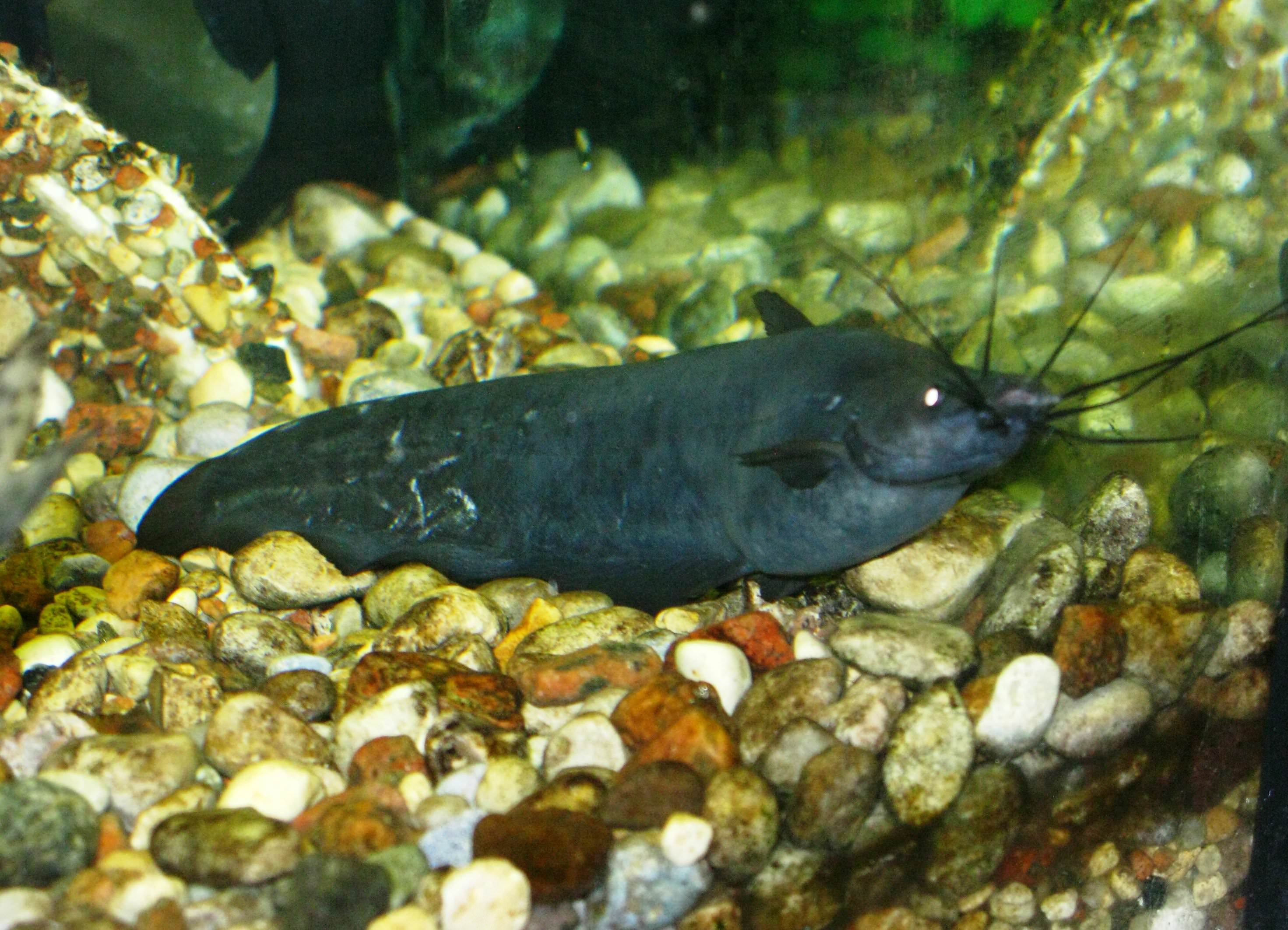
The stinging catfish is an eel-like fish that can grow to be about 3 feet long. They are brown or olive green in color with a white or cream-colored belly.
One of the most notable features of this fish is the barbs that line their body. These barbs are hollow and contain a venom that can be very painful (and even deadly) to humans.
The stinging catfish also has a very long and thin body with a small mouth. They have very small eyes and no scales.
The dorsal and anal fins are both located towards the back of the body and are close together. The caudal fin is very small and the pectoral fins are located towards the front of the body.
Lifespan
The average lifespan of a stinging catfish is 5 to 10 years.
These fish are fairly long-lived, but there are a number of factors that can impact their lifespan. Poor water quality, for example, can shorten their life significantly.
Proper care and a good environment can help them reach the higher end of their lifespan potential.
Size
Stinging catfish can grow up to 24 inches (61 cm) long.
Tank
Tank Size
The recommended tank size for a single stinging catfish is 50 gallons. This is a very large fish and it will grow to be about 2 feet long when fully matured.
If you’re looking to keep more than one stinging catfish in your tank you’ll need to add an additional 50 gallons for each fish.
It’s important to note that these fish are very aggressive and should only be kept with other fish that can hold their own.
Water Parameters
Stinging catfish are not as popular as other freshwater aquarium fish. That might have something to do with their attitude. These fish are notorious for being aggressive and territorial. They’re not the best community fish.
They’re also not the easiest to care for. Stinging catfish are very sensitive to changes in water parameters. Even a slight deviation can cause stress and health problems.
To avoid these issues, it’s important to maintain the following water parameters.
- Water temperature: between 72°F and 82°F
- pH levels: between 6.0 and 7.0
- Water hardness: between 5 and 19 dGH
- Alkalinity Levels: 3-10 dKH
What To Put In Their Tank
The inside of a stinging catfish’s tank doesn’t need to be anything special. They’re not a species that’s known for being fussy when it comes to their surroundings.
A layer of gravel on the bottom is fine, but we recommend something a bit softer like sand. This will help protect their delicate barbels ( whiskers) from any damage.
These fish also like to have something to hide behind so they feel safe. Driftwood, rocks, and caves are all suitable options.
Plants are a little trickier since stinging catfish are known to nibble on them. If you want to go this route then try to find something that’s known to be tough (like java moss or hornwort).
You should also avoid using anything that has a lot of sharp edges. Stinging catfish are known to bump into things when they’re swimming around and they can easily cut themselves on something like that.
Common Diseases
Stinging catfish are generally a hardy bunch, but that doesn’t mean they don’t succumb to disease from time to time. The most common illness these fish experience is ich, which is a parasite that can cause a lot of problems if left untreated.
The most obvious sign of ich is the presence of small white spots on the fish’s body. If you see this, it’s important to take action immediately. Ich can quickly spread and kill your fish if it’s not dealt with in a timely manner.
There are a number of other potential diseases that can affect stinging catfish, but they’re not nearly as common.
Some other things to look out for include infection from cuts (usually caused by a rough substrate) and swim bladder problems.
The best way to keep your fish healthy is by maintaining clean and stable water conditions in their tank. This will help them resist disease and remain healthy for many years to come.
Behavior & Temperament
The stinging catfish is a nocturnal bottom-dweller that is relatively peaceful and doesn’t bother other tank mates.
This fish is shy and reclusive, so it spends most of its time hiding in caves or other dark places in the tank. When it does come out, it’s usually at night when the tank is dark.
The stinging catfish gets its name from the venomous barbs that line its body. These barbs help the fish to defend itself, but they can also be used to sting other fish or humans. The venom is not deadly, but it can cause pain and swelling.
Overall, the stinging catfish is a peaceful and relatively low-maintenance fish. Just be careful of those barbs!
Tank Mates
When it comes to stinging catfish tank mates, there are a few things to consider. First, these fish come from slow-moving waters in South America. As a result, they’re not used to a lot of movement in their environment.
For this reason, it’s best to avoid fish that are known to be nippy or active swimmers. These fish will stress out your stinging catfish and potentially lead to health problems.
Secondly, stinging catfish are bottom-dwellers. They prefer to stay close to the substrate where they can scavenge for food.
For this reason, it’s best to avoid fish that occupy the middle or top of the water column. These fish will compete with your stinging catfish for food and space.
Finally, stinging catfish are peaceful fish. They’re not known to be aggressive towards other fish.
With these things in mind, here are some compatible stinging catfish tank mates:
- Plecostomus
- Corydoras
- Otocinclus
- Loricariids
- Tetras
- Knife Fish
- Silver dollars
- Pacu
Breeding
The stinging catfish is a species of freshwater ray-finned fish native to Central and South America.
This species is difficult to breed in captivity. The main reason for this is because they require a very specific set of water conditions. The water must be clean and well-oxygenated. It should also have a slightly higher temperature than usual.
Another challenge is that stinging catfish are very sensitive to changes in their environment. Even the slightest change can stress them out and make them less likely to breed.
If you’re determined to breed this species, the first step is to set up a well-oxygenated breeding tank. The water should be around 82 degrees Fahrenheit.
Then, you need to find a male and female that are ready to breed. The best way to tell is by their size. Males are typically larger than females.
Once you’ve found a pair, add them to the breeding tank. The female will lay her eggs in a cave or other hidden area. The male will then fertilize them.
After the eggs have been fertilized, the male will guard them until they hatch. This usually takes about two weeks.
When the fry hatch, they will be very small and vulnerable. Make sure to remove the adults from the tank so they don’t eat the fry.
Feed the fry live foods such as baby brine shrimp or daphnia. You can also give them finely-ground flake food.
As they grow, you can slowly start to introduce them to larger foods.
Conclusion
The stinging catfish is a venomous fish that can cause a painful sting. However, they are not considered to be dangerous to humans.
While they are not the easiest fish to care for, they can be a rewarding addition to your tank.
Just be sure to do your research before you add one to your tank, and be sure to take proper safety precautions when handling them.


